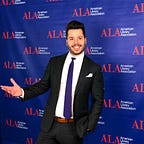Who is the greatest person that history has forgotten?
While it seems impossible to single out the “greatest person” from history, whether remembered or forgotten, I am quite fond of a seemingly “average” couple whose decision to do the right thing had an incredible impact on the world.
Meet Moses and Susan from Diamond, Missouri. Their single decision ended up saving two billion people from starvation.
Intrigued?
Moses and Susan were farmers who, in the 1860’s, lived in a slave state, but did not believe in slavery. Consequently, they were a target for bigots like Quantrill’s Raiders who terrorized the area.
One cold January night, the Raiders rode through their farm, burned the barn, shot several people, and kidnapped a woman named Mary Washington who refused to let go of her infant son, George. Although the Carvers technically owned Mary and her children, as was the case with many farmers in the South at that time, it’s reported that Susan was in fact friends with Mary. In the aftermath of this dark event, she worked tirelessly to contact nearby farms and neighboring cities in order to secure a meeting between Moses and the bandits.
Two days later, Moses rode off to meet with the bandits at a crossroad in Kansas, several hours north. At the arranged time, Moses met up with four of them, each carrying torches and with caps over their heads. At the meeting, the farmer traded the only horse they had left in exchange for a dirty sack and its contents. As the bandits took off, Moses fell on his knees and there, alone on that dark winter night, he pulled from the bag a naked, almost-dead baby boy. He quickly opened his coat and shirt and pressed the baby to his own skin. Covering him with his own clothes and relying on his body’s warmth, Moses began the journey home. He walked through the night and into the next day to get the child to Susan. There, they made a commitment to the child–and to each other–that they would care for him and make sure he received an education, in memory of his mother Mary who was already dead.
They also gave the boy their name and from then on raised him as George Washington Carver.
Yes, THAT George Washington Carver, the so-called “Peanut Man”.
Okay, but how did they save two billion people?
Well, George Washington Carver grew up to love botany and, thanks to another teacher, Etta May Budd who fiercely fought against racism, ended up at Iowa State. At ISU, he had a Dairy Sciences professor who would allow his six-year old son to go on weekend botanical expeditions with Carver. By engaging him and sharing his passion, Carver instilled in the boy a love for botany and a powerful vision of what plants could do for humanity, effectively pointing his life in a particular direction.
This boy was Henry Wallace.
Wallace grew up to, among other things, become the U.S. Secretary of Agriculture and Vice President, under FDR. During a trip to Mexico, he saw the importance of corn for the diet of many Mexicans, but also their struggle to produce enough. This is when he decided to create a station in Mexico with a sole purpose of hybridizing corn and wheat for dry climates.
He hired Norman Borlaug, a talented young scientist from Iowa, to lead the charge on this project.
Soon after, Borlaug discovered a way to hybridize high-yield, disease-resistant corn and wheat for dry climates. His product flourished in the most remote and driest places on the earth, regenerating like no other. As a result, over the years, his discovery saved an estimated two billion people from starvation.
[Later, Borlaug won the 1970 Nobel Prize for Peace, and also the US Presidential Medal of Freedom for his contributions.]
But who really saved these two billion people?
Borlaug, who was given the opportunity by Wallace? Or Wallace, who developed the passion for and learned the potential of bio-innovation from Carver? Or Carver, who created hundreds of products out of sweet potato and peanut (although, not peanut butter), but whose very life was saved by Moses and Susan?
Or was it Moses and Susan, a couple of farmers from Missouri, who believed in doing the right thing even under difficult conditions?
What is more, how many lives have these two billion positively affected and, indeed, saved ever since?
Are you and I among those two billion?
Even though many of us struggle to see our value, or the concrete ways we contribute to the world, this story illustrates that each of us plays an enormous role in the universe. We might never see the effects of our labor or our decisions, but that doesn’t mean we are not changing the world ever day — for better or for worse.
History may never remember what we have said or done, but that doesn’t diminish the impact we make daily — in big and small ways — or the lives we will save long after we are gone!
__
Some people have (re)told this story in the context of The Butterfly Effect; I first encountered it in the book of the same name by Andy Andrews.
